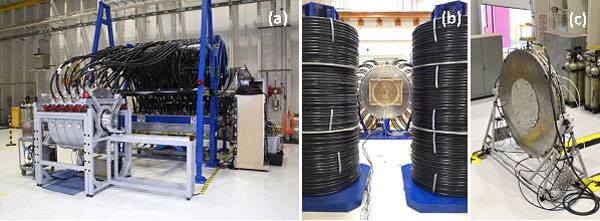
We have developed three prototype accelerators that have established a technical foundation for revolutionary next-generation pulsed-power machines. Centipede (history’s first gigawatt-class four-pulse accelerator) is used to evaluate multi-pulse technology for radiographic measurements of subcritical experiments at Nevada. Thor (history’s first megampere-class arbitrary waveform generator) is optimized for megabar-class material-physics experiments. The Z-Next Cavity is history’s first 2-meter-diameter 100-gigawatt pulse generator; the cavity could serve as a prime-power source for a future 1,000-terawatt accelerator that is optimized for thermonuclear fusion research. (1000, LDRD)
Sandia advanced its academic partnerships by building new faculty relationships, research collaborations, and strengthening its talent pipeline. Under its Academic Alliance program, the Chief Research Office hosted about 40 early-career professors from leading universities for a twoday orientation in August 2017. They toured Sandia’s research facilities and networked with leadership and principal investigators. Sandia also established more than 30 new research collaborations by leveraging faculty expertise in cyber and infrastructure security, shock dynamics, additive manufacturing, data sciences, and other important capability areas. (1000, 2000, 5000, 6000, 8000, 9000, LDRD)
In 2017, Sandia won five Federal Laboratory Consortium awards for remarkable technology transfer achievements. Awards included Outstanding Regional Partnership for the National Rotor Testbed with Oak Ridge National Laboratory and TPI Composites Inc., which works to reduce costs and production time for wind turbine blades; and Outstanding Commercialization Success for SpinDx™ and the Trak® Male Fertility Testing System. These prestigious awards recognize the range of technologies developed at Sandia that are successfully transferred to the private sector, resulting in valuable social and economic impacts.
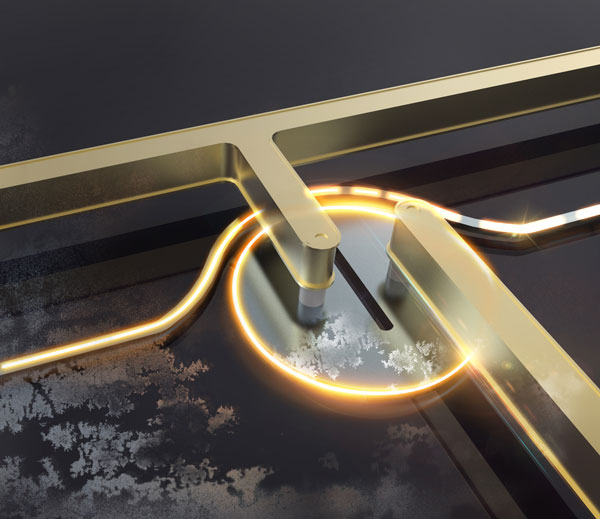
A team of researchers in Sandia’s National Security Photonics Center demonstrated world record lowtemperature, high speed (10 Gb/s) data communication from a 4 Kelvin cryogenic environment using low-energy silicon photonic modulators. This achievement demonstrates a 10,000-times improvement in data bandwidth over current approaches, with approximately a 400-times reduction in thermal load compared to copper cabling. Low-energy signaling is critical for cryogenic systems such as satellite sensors and beyond-Moore digital computers operating at ultra-low temperatures.
A new technique for reducing noise in coincidence measurements of cation mass and electron energy from photoionization events provides unprecedented accuracy for identifying and quantifying products in gas-phase chemical reactions. The approach, invented by physical chemists at Sandia’s Combustion Research Facility collaborating with University of the Pacific and Swiss Light Source colleagues, removes “false coincidences” from chemical-physics experiments. Dynamic range is improved by a factor of 100, enabling the quantification of minute amounts of one chemical in the presence of enormous amounts of another. (8300)
Computational analysts deployed and used electrical modeling tools developed by the Qualification Alternative to the Sandia Pulsed Reactor (QASPR) project for the first time to predict the margin of circuit performance in the W88ALT370 AF&F under neutron radiation from hostile nuclear bursts. Advanced Uncertainty Quantification (UQ) techniques were used to raise confidence in the calculations to levels acceptable for qualification evidence. These activities were identified on the FY17 NNSA NA-10 “Getting The Job Done List.”
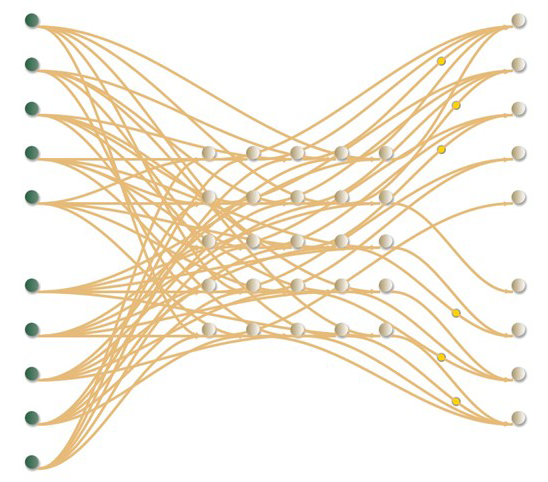
The Hardware Acceleration of Adaptive Neural Algorithms (HAANA) team concluded a three-year Grand Challenge LDRD, under which the team developed new solutions for low-power brain-inspired computation for scientific computing and data analytics applications in cybersecurity and remote sensing. HAANA has introduced three new braininspired architectures, released a formal tool to evaluate neuromorphic hardware (CrossSim), and has produced several brain-inspired spiking and adaptive algorithms for machine learning. (1400, 1800, 2600, 5200, 5800, 6300, 8700, 8800, 9300)
The Focused Ion Beam (FIB) Interferometer team was responsible for inventing and proving the effectiveness of an in-situ interferometer tool within an FIB vacuum chamber. In-situ interferometry is a groundbreaking capability in the world of FIB processing, where ultra-precise measurements of very thin films are crucial for success. The consequences of misjudging thickness measurements by even hundreds of nanometers are typically catastrophic and unrecoverable. In-situ measurement techniques allow an FIB operator to be incredibly accurate in these routine processing steps. (5000)
Center 1300’s Radiation Effects Science Energetic Neutron Project fielded the first large active electronics payload on a high-yield neutron burst at the National Ignition Facility in August 2017. This marks the first active NW-relevant electronic components tested for fusion neutron effects at Lawrence Livermore National Laboratory’s NIF, and is a large step forward for the nation’s nuclear survivability experimental capability. This also marked the first collaborative shot between the Inertial Confinement Fusion and National Security Applications groups at NIF, while being led by Sandia. (1300)
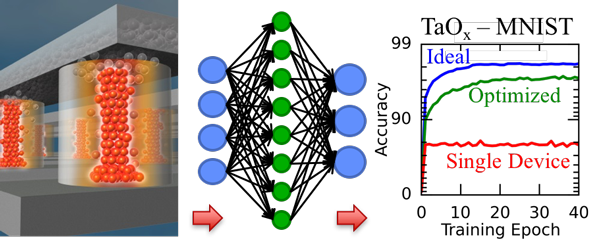
To analyze vast quantities of data, Sandia is fabricating hardware using new programmable resistors that mimic neural synapses. The Sandia hardware fundamentally changes how computation is done by using device physics to train neural networks. A key challenge remains for designers as materials, devices, circuits, architectures, and algorithms must be codesigned. A crossbar simulator, CrossSim, that leverages Sandia’s Xyce circuit-simulator was created to enable this codesign. CrossSim has guided the development of better artificial synapses and allowed for algorithmic innovations to use noisy, nonideal devices. (8700, 5000, 1000 LDRD)
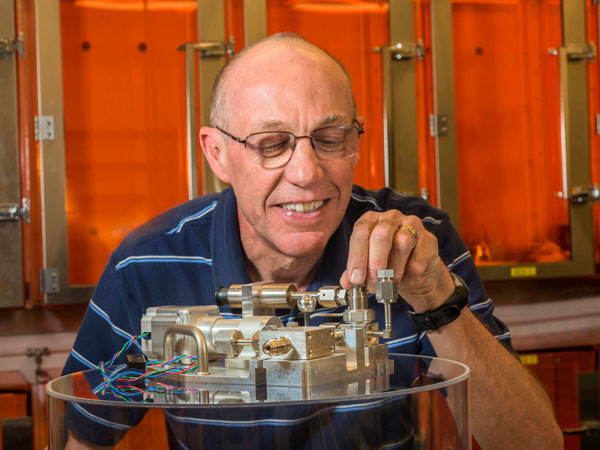
A cross-organizational team executed the first tritium experiment on the Z machine, using engineered systems and thoughtful work planning to mitigate this new hazard at the facility. Thermonuclear fusion of deuterium and tritium can increase the neutron yield ultimately by factors of 50-100, enhancing the impact of Z for Nuclear Survivability and High-Energy-Density science supporting Stockpile Stewardship. This initial experiment opens the door to higher quantities of tritium on the path toward high-yield Inertial Confinement Fusion in the future of the pulsed power program. (1000/2000/8000/0600, LDRD)
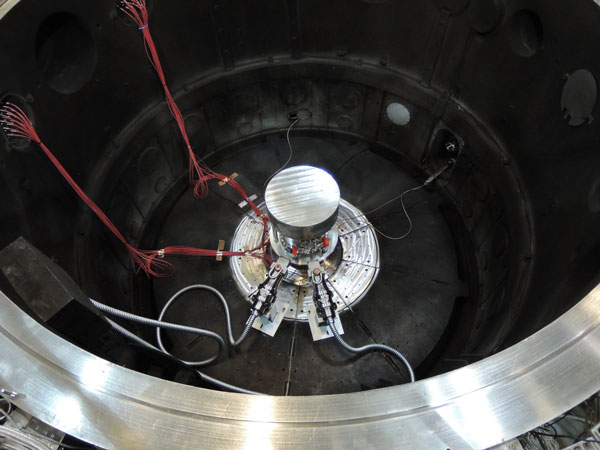
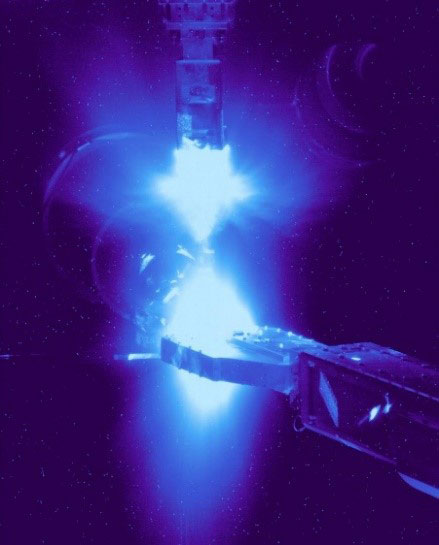
Sandia scientists showed that the world’s largest laser the National Ignition Facility at Lawrence Livermore National Laboratory, could be used to study thermomechanical shock from intense X-ray bursts, important for qualifying additively manufactured and other advanced materials to radiation environments. In each experiment, 160 laser beams energized a krypton plasma, launching ~13 keV X-rays into specimens monitored with high-speed, ultralow noise interferometry developed by Sandia. Collaborators from Los Alamos National Laboratory provided high-resolution X-ray tomography using the Advanced Photon Source at Argonne National Laboratory to study microstructural damage caused by the extreme radiation. (1300, 1400, 1500, 1600, 1800)
Mission applications such as impact sensor analysis for the B61 require efficient solution of multiphysics problems with multiple material interfaces. Sandia’s coupling tool, Forte, enabled partitioned solution of such problems for matching interface computational grids. A recent LDRD project developed and implemented an algorithm for accurate and minimally intrusive couplings, extending Forte to non-matching interfaces, enabling key timely analysis of B61-12 Nose Bomb Subassembly field tests. By allowing reuse of existing production codes, this coupling capability helps to leverage Sandia’s extensive investments in simulation technologies. (1000, LDRD)
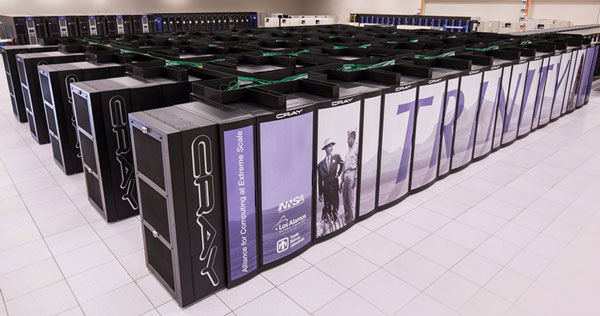
The Trinity supercomputer, a joint project of Sandia and Los Alamos, successfully passed its Production Readiness Milestone, the final step to transitioning into full production for support of NNSA’s stockpile stewardship mission. Trinity features a innovative architecture, including Intel Phi 68- core processors (code named Knights Landing) with integrated high bandwidth memory. The system was integrated by Cray and features its high performance Aries interconnect network. The system architecture effort was led by Sandia, while Los Alamos leads operations and the project office. (1000, 9000)
Reported in November’s Nature Scientific Reports, researchers from 5200, 1800, and 6700 developed a photodetection paradigm based on graphene, a single layer of carbon atoms, enabling smart charge integrating pixels that offer high-sensitivity while simplifying complex read-out architectures currently employed. Developed under the Smart Sensors Technology Grand Challenge LDRD, this advance provides a path to next-generation multimodal (visible/infrared/radiation) sensors, allowing the use of new absorbers and architectures currently unavailable. Functionally, graphene acts as a local amplifier with large photogain, creating pixels that are individually controllable. (5000)
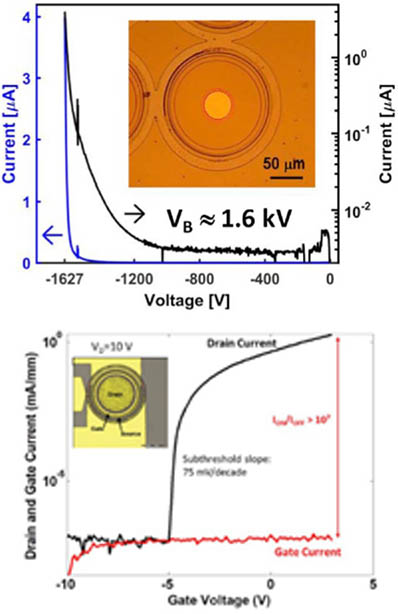
The Ultra-Wide-Bandgap Grand Challenge Laboratory Directed Research and Development team recently won an R&D 100 award for developing the next generation of semiconductors to enable dramatic improvements in electrical power conversion. The technology will benefit numerous critical applications, ranging from ultra-compact and robust power converters for nuclear and defense systems, to ultra-efficient power converters for a resilient electric grid. The award recognizes two ultra-widebandgap semiconductor devices, a diode and a transistor, each of which is the first of its kind and has exhibited record performance. (LDRD)
Over the past three years, the PELE ALMOND* team has successfully designed and manufactured an “embedded” fuze for the Air Force Research Laboratory (AFRL) capable of surviving extreme pressure and high-G environments. As part of the design task, the Dept. 2627 team collaborated with both internal organizations (2553) and external vendors to qualify a Direct Header Deposition (DHD) Exploding Foil Initiator detonator. The success of this project has led to significant follow-on work with AFRL and a high likelihood of transitioning the DHD technology to industry partners. (2600, 2500, 1800) *ALMOND = Advanced Low Density Fireset for Modular Novel Detonation